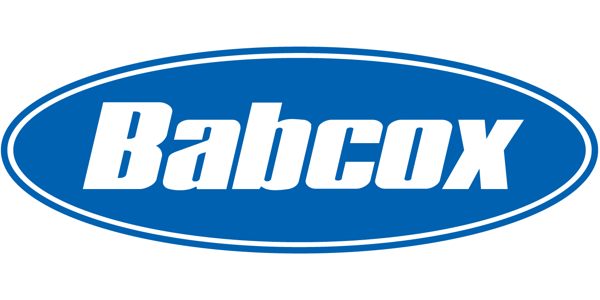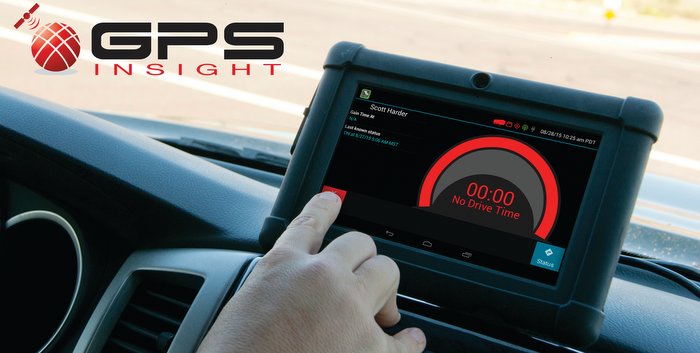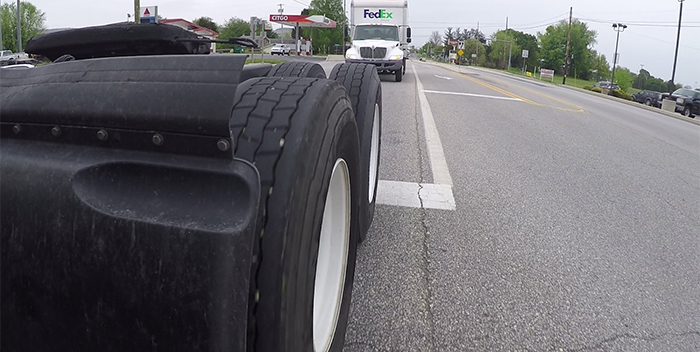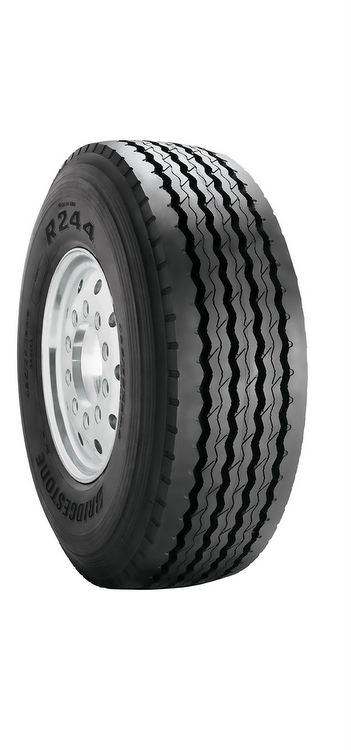The underside of trailers — the components that make up the suspension system — are continuing to evolve. In the last few years the industry has seen the addition of unitized hubs and more widespread specifying of air ride suspensions for a broader range of applications. These days we are seeing continued refinements of these products plus a push toward composite systems and a return to mechanical systems for some operations — all of which are giving fleets more choices.
Mechanical vs. air
In the early ‘90s the transition from mechanical versus air ride suspensions began to take hold, according to Jim Crowcroft, director of marketing for Hendrickson Trailer. While the upfront cost of air suspensions is still greater than the price of a mechanical suspension, the gap is closing — and, he asserts, there is a growing understanding that air suspension provides better cargo and trailer component protection.
About 10 years ago Hendrickson introduced Intraax, an integrated axle and suspension solution, which has become the backbone of its integrated axle system that has helped the company offer additional trailer suspension systems.
“We offer two different primary suspension systems, HT and Intraax, which can be placed virtually anywhere on a trailer undercarriage and offer exceptional flexibility for different trailer designs, Crowcroft says. “Hendrickson also offers Vantraax, which is a van trailer sliding suspension, which is a very durable and lightweight solution that can be easily installed by the trailer builder as one system.”
Crowcroft says that Hendrickson sees the trailer suspension market evolving to total undercarriage systems. He notes that the wide variety of trailers on the road today dictates more specialized products, which his company is able to provide.
“We feel that we have perfected the way axles and suspensions come together under the trailer and we have iterated that design into various trailers and application-specific designs.” He says that Hendrickson believes the natural evolution of undercarriage system solutions will include wheel ends and brakes.
Fleets pay close attention to the suspension systems on trailers because they are a key component, he notes.
“Fleets want suspension systems that provide quality and durability,” he says. “We spend our time with fleets talking through choices for their applications and the features our suspensions can provide.”
When it comes to choosing between air suspension and mechanical suspension systems, Crowcroft says, “Hendrickson believes the big advantage of air systems is that they are more compliant. There is also a payback in that air suspensions provide less abuse to the load. A good example is a refrigerated trailer, where air suspension provides a more forgiving ride to the heavier trailer specified for this application.”
For the future, Crowcroft says that lighter weight solutions are going to be key and that new designs and materials will provide excellent trailer suspension choices.
“We’ve been looking at new materials, like higher strength steel, aluminum and composites to provide weight savings. We think the industry also will see more integrated systems for trailer undercarriages, solutions that address wear components such as brakes, drums and hubs.”
Composite choices
ArvinMeritor offers a range of air suspension systems, and has been testing a new composite suspension system, SimilAir Composite Spring, which it intends to bring to market early this year. According to Bob Zirlin, director of product planning for trailer suspensions at ArvinMeritor, there are many advantages to composite springs.
“Better riding composite springs could target trailer users interested in improving ride quality without maintenance concerns and cost penalty of air suspensions,” Zirlin says. “Our product, SimilAir, gives a ride that approaches that of an air ride systems, but as a total system it is less expensive to purchase than air. They also don’t have the maintenance concerns represented by the air bags, shock absorbers, bushings and leveling valves require by air suspension.”
The composite suspension system represents an exclusive agreement the company has with Lifeflex LLC to distribute its existing line of composite springs, and jointly develop new springs with enhanced performance, he adds.
Zirlin says that fleets that are looking for a better ride, but don’t want to purchase an air ride suspension system would find this a viable and affordable option. Despite the growth in air suspensions, many large fleets continue to use mechanical trailer suspensions. He says that some fleets that had been specifying air suspension systems are considering going back to mechanical systems and that these are the fleets that might find that a composite system gives them the best of both worlds.
“Air suspension systems will not go away,” says Zirlin. “In fact, we believe there will be continued growth in the short term and we are enhancing our current systems and developing new air suspension models to address that growth. The axles for both our air and mechanical systems can be fully buttoned up with wheel end components. In 1996, ArvinMeritor introduced the TB axle, a product with long-life wheel end benefits of fully-unitized hubs.”
While these unitized hubs offer many benefits, they are comprised of bearing-grade steel, and as such come with a premium price, he says.
To provide an option to the unitized hub, Zirlin says, “In 2003, we introduced the TL axle with a separate cartridge bearing assembled to the hub that gives the benefits of a unitized system with a more conventional hub. This makes the TL axle much more cost effective, even though it can be offered with a warranty similar to the TB’s for applications requiring a 20,000 lb. wheel end rating.” While there is no such thing as a maintenance-free suspension system, with regular inspections unitized and cartridge hubs reduce maintenance concerns with fewer parts to fail and/or be replaced.
Spec’ing trends
When asked about current spec’ing trends for trailer suspensions, Mark Holley, product manager for the commercial vehicle systems group of Dana Corp., replies, “Over the past decade, we have seen air ride suspensions taking on an increasingly larger share of the market when compared to mechanical spring ride systems. We attribute that to the ride benefits, lightweight designs and resale value of air suspensions. That’s why Dana continues to focus on these areas with the design and development of all new systems. Simultaneously we are also focusing on durability issues.”
Customers will only return to OEs if the air products prove to be reliable over time, he says.
“Due to the high demand for trailers of all types and sizes that we are experiencing right now, the mechanical spring market is also going through a growth spurt,” Holley, says. “There will always be applications where mechanical suspensions are better suited for a specific application — especially off road situations.”
Despite this, he says Dana sees both markets growing, with the demand for air rides perhaps stabilizing somewhat in 2006 but in no way shrinking.
“Incorporating new technologies into the design and manufacture of Dana suspensions is a never-ending process around here, Holley says. “If you’re a suspension supplier and not doing that, you’re not gong to be a player very long. We’re not going to let that happen. To borrow a popular poker term — I guess you could say, ‘we’re all in.’”
Holley states that with the multitude of vocations, applications and duty cycles that today’s heavy trucks are being asked to tackle, Dana is reluctant to say one suspension systems is more appropriate than another.
“It really comes down to selecting a supplier that delivers the total package, regardless of suspension type,” he says. “While lightweight, low maintenance and smooth ride are the buzz words most often heard today, you’ll also want to put a system under your trailer that will give you years and years of excellent service. That’s always been our objective, and one that the industry is beginning to recognize on a growing basis.”
All about ride
The Holland Group offers a new portfolio of both air-ride and mechanical suspensions as a result of evolving products and technologies from the former Neway, Binkley and Holland Hitch organizations. According to Ken Griswold, product manger for Holland’s Trailer Suspension System’s Product Management Team (PMT), Holland’s acquisition of Neway Anchorlok International in 1999 presented a historical opportunity to rationalize a combined air and mechanical product portfolio that exceeded more than 50 fragmented suspension brands. The rationalization program augmented with an influx of Holland technology resulted in a new suspension offering comprised of 16 brands.
“Holland’s newest air ride system for the North American Van Market, the CB4000, is one result of Holland’s rationalization efforts,” Griswold says. “The slider box used in the system has roots to the Binkley side of the business. Binkley was known for producing lightweight durable sliders through the utilization of high-alloy steel. SwingAlign is a new patent pending axle alignment feature that utilizes that same acme screw technology that is found in Holland’s landing gears. SwingAlign is the industry’s first axle alignment feature that does not require any disassembly, special tools or replacement parts. The CB4000’s pivot bushing is another new patent pending design which introduced new stress reducing geometries that greatly increased the component life. The trailer team also teamed up with the casting experts from Holland’s fifth-wheel group to develop a new integral cast trailing-arm beam in lieu of a traditional fabrication that requires over 20 individual parts. Commer-cially available axles are used to complete the system offering. In short, the CB4000 is an incomparable product solution that simply saves fleets money through efficiencies and increased uptime,” Griswold says.
From a mechanical perspective, Holland offers the UltraLite2 suspension/slider package for those customers that prefer a mechanical solution to air ride. Holland’s QwikRelease pin pull mechanism, which was originally used on Binkley mechanicals, is now standard on all air and mechanical suspension/slider products. Standardization of components between air and mechanical systems optimizes operations and reduces cost along the whole distribution chain.
Holland’s trailer suspension portfolio is supported on The Holland Group’s new Web site, which provides an extensive amount of information including contact list for Holland’s worldwide sales and service network, sales literature and comprehensive technical service materials for all of its products. Genuine Holland Aftermarket service parts and distribution network also is supported through Holland’s Web site as well as multimedia material, Griswold says.
“Holland provides customers with suspension solutions based on their application and financial parameters,” Griswold says. “Some fleets demand air for its load/trailer protection characteristic and resale value. On the other hand, mechanical suspensions perform well at their design rating and financials improve if resale is not a major factor.”
Be educated
Fleets that want the most for their suspension dollar need to consider upfront cost without losing site of costs related to performance and maintenance. Talk with your supplier about the many product options they offer and give them details on your trailer applications. With all the new products, and systems — along with practical ways to specify mechanical systems for specific applications — there are greater opportunities for finding the best suspension system for your fleet.









